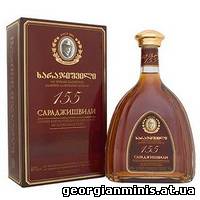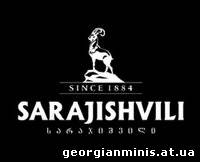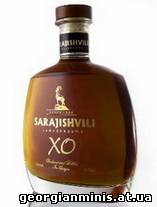The origins of brandy are clearly tied to the development of distillation. Concentrated alcoholic beverages were known in ancient Greece and Rome and may have a history going back to ancient Babylon. Brandy, as it is known today, first began to appear in the 12th century and became generally popular in the 14th century.
Initially wine was distilled as a preservation method and as a way to make the wine easier for merchants to transport. It was also thought that wine was originally distilled to lessen the tax which was assessed by volume. The intent was to add the water removed by distillation back to the brandy shortly before consumption. It was discovered that after having been stored in wooden casks, the resulting product had improved over the original distilled spirit. In addition to removing water, the distillation process leads to the formation and decomposition of numerous aroma compounds, fundamentally altering the composition of the distillate from its source. Non-volatile substances such as pigments, sugars, and salts remain behind in the still. As a result, the taste of the distillate may be quite unlike that of the original source.
As described in the 1728 edition of Cyclopaedia, the following method was used to distill brandy:
A cucurbit was filled half full of the liquor from which brandy was to be drawn and then raised with a little fire until about one sixth part was distilled, or until that which falls into the receiver was entirely flammable. This liquor, distilled only once, was called spirit of wine or brandy. Purified by another distillation (or several more), this was then called spirit of wine rectified. The second distillation was made in balneo mariae and in a glass cucurbit, and the liquor was distilled to about one half the quantity. This was further rectified—as long as the operator thought necessary—to produce brandy.
To shorten these several distillations, which were long and troublesome, a chemical instrument was invented that reduced them to a single distillation. To test the purity of the rectified spirit of wine, a portion was ignited. If the entire contents were consumed without leaving any impurity behind, then the liquor was good. Another, better test involved putting a little gunpowder in the bottom of the spirit. If the gunpowder took fire when the spirit was consumed, then the liquor was good.
As most brandies are distilled from grapes, the regions of the world producing excellent brandies have roughly paralleled those areas producing grapes for viniculture. At the end of the 19th Century, the western European market—and by extension their overseas empires—was dominated by French and Spanish brandies, and eastern Europe was dominated by brandies from the Black Sea region, including Bulgaria, the Crimea, and Georgia. In 1880, David Saradjishvili founded his Cognac Factory in Tbilisi.
Initially wine was distilled as a preservation method and as a way to make the wine easier for merchants to transport. It was also thought that wine was originally distilled to lessen the tax which was assessed by volume. The intent was to add the water removed by distillation back to the brandy shortly before consumption. It was discovered that after having been stored in wooden casks, the resulting product had improved over the original distilled spirit. In addition to removing water, the distillation process leads to the formation and decomposition of numerous aroma compounds, fundamentally altering the composition of the distillate from its source. Non-volatile substances such as pigments, sugars, and salts remain behind in the still. As a result, the taste of the distillate may be quite unlike that of the original source.
As described in the 1728 edition of Cyclopaedia, the following method was used to distill brandy:
A cucurbit was filled half full of the liquor from which brandy was to be drawn and then raised with a little fire until about one sixth part was distilled, or until that which falls into the receiver was entirely flammable. This liquor, distilled only once, was called spirit of wine or brandy. Purified by another distillation (or several more), this was then called spirit of wine rectified. The second distillation was made in balneo mariae and in a glass cucurbit, and the liquor was distilled to about one half the quantity. This was further rectified—as long as the operator thought necessary—to produce brandy.
To shorten these several distillations, which were long and troublesome, a chemical instrument was invented that reduced them to a single distillation. To test the purity of the rectified spirit of wine, a portion was ignited. If the entire contents were consumed without leaving any impurity behind, then the liquor was good. Another, better test involved putting a little gunpowder in the bottom of the spirit. If the gunpowder took fire when the spirit was consumed, then the liquor was good.
As most brandies are distilled from grapes, the regions of the world producing excellent brandies have roughly paralleled those areas producing grapes for viniculture. At the end of the 19th Century, the western European market—and by extension their overseas empires—was dominated by French and Spanish brandies, and eastern Europe was dominated by brandies from the Black Sea region, including Bulgaria, the Crimea, and Georgia. In 1880, David Saradjishvili founded his Cognac Factory in Tbilisi.
Labelling
Brandy has a rating system to describe its quality and condition; these indicators can usually be found near the brand name on the label:
- A.C.: aged two years in wood.
- V.S.: "Very Special" or 3-Star, aged at least three years in wood.
- V.S.O.P.: "Very Special Old Pale" or 5-Star, aged at least five years in wood.
- X.O.: "Extra Old", Napoleon or Vieille Reserve, aged at least six years, Napoleon at least four years.
- Vintage: Stored in the cask until the time it is bottled with the label showing the vintage date.
- Hors d'age: These are too old to determine the age, although ten years plus is typical, and are usually of great quality.






